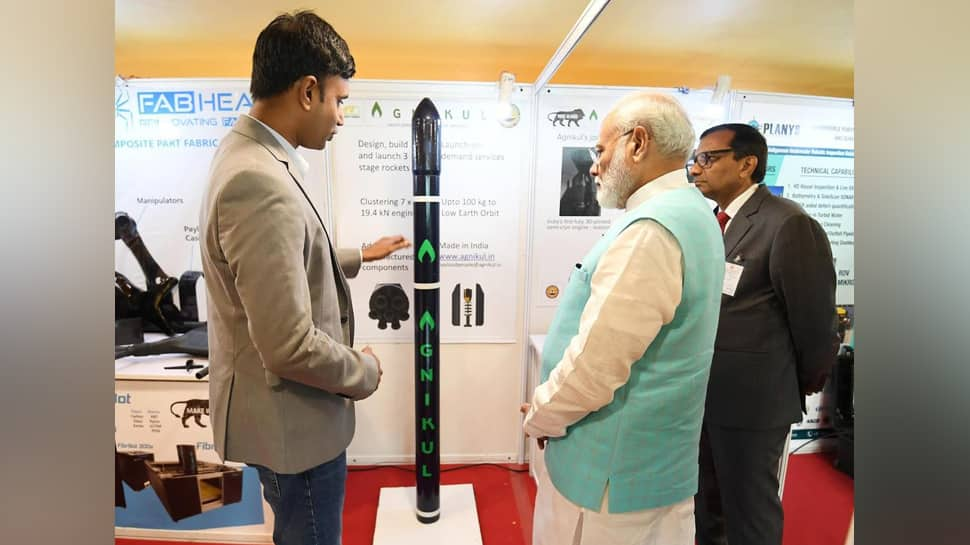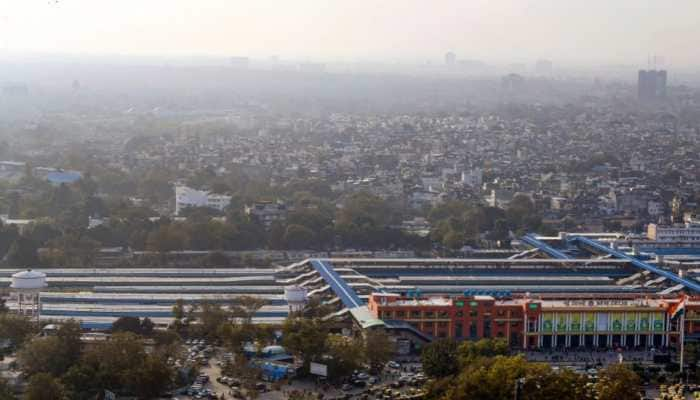Indian start-up Agnikul successfully test-fires fully 3-D printed semi-cryo rocket engine
The company’s maiden rocket Agnibaan is a two-stage launch vehicle. A typical rocket consists of two or more stages, each of which would have its own engines (either single or packed in a cluster). Simply put, a rocket is a combination of multiple engines (stages) that are vertically stacked.
- According to the company, Agnilet was designed to encapsulate all of these into just one piece of hardware. So, this automates the making of an entire engine.
- Rocket engines are usually comprised of hundreds of parts that serve various purposes.
Trending Photos
)
Chennai: Indian Space start-up Agnikul Cosmos has announced the successful test-firing of their semi-cryogenic rocket engine, which has been fully manufactured, as a single piece, using 3-D printing technology. Agnikul’s semi-cryogenic engine, called Agnilet, would be fulled by rocket-grade kerosene and uses liquid oxygen (stored at -183 degrees celsius) as an oxidizer.
Rocket engines are usually comprised of hundreds of parts that serve various purposes, but according to the company, Agnilet was designed to encapsulate all of these into just one piece of hardware. So, this automates the making of an entire engine.

The company’s maiden rocket Agnibaan is a two-stage launch vehicle. A typical rocket consists of two or more stages, each of which would have its own engines (either single or packed in a cluster). Simply put, a rocket is a combination of multiple engines (stages) that are vertically stacked.
Agnibaan is being designed and developed to lift up to 100kgs to 700kms Low Earth orbit. So far, the team has test-fired its second engine - Agnilet, (1.2kN thrust) while the first stage engine - Agnite (25kN thrust) is expected to be test-fired later this year.
When Zee media asked about the significance of the 3-D printing technology and the advantages, Srinath Ravichandran, CEO and co-founder of Agnikul Cosmos said that it was quick, cost-effective and had no room for errors. “In the conventional process, it could take longer than a month to fabricate the very same engine. With 3-D printing, we can realize light-weight engines despite their complex geometry. Our single-piece 3-D printed engine requires no assembly, it can pretty much be directly fitted into the rocket” he told Zee Media.
“Since our inception, we have always been a huge believer of the “Make in India” ideals and more recently of the AatmaNirbharBharat vision of our Honourable Prime Minister. True to that spirit, everything about this engine is Indian,'' said Moin SPM, Cofounder and COO of the company.
Team Agnikul are aiming for their maiden orbital launch by 2022 and company officials said they have signed Memoranda of Understanding with a few customers for offering their launch services.
Stay informed on all the latest news, real-time breaking news updates, and follow all the important headlines in india news and world News on Zee News.
Live Tv







)
)
)
)
)
)
)
)
)
)
